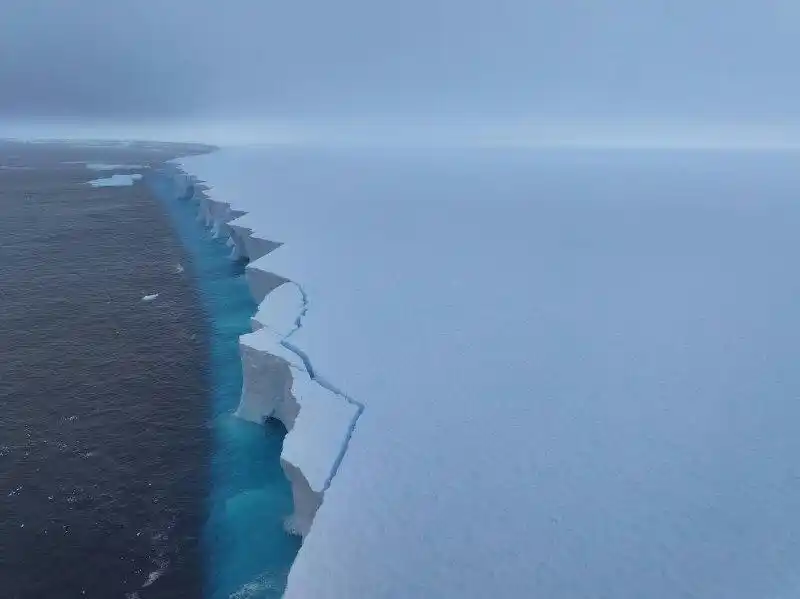The press service of the Russian Arctic and Antarctic Research Institute reported on September 11 that the world’s largest iceberg, A23a, has experienced another massive calving, with its area decreasing by nearly 20% in a single event. Currently, its area still exceeds 1,400 square kilometers, maintaining its status as the world’s largest iceberg.

According to Polina Zolotukhina, a leading expert at the institute’s Ice River Hydrometeorological Information Center, A23a has separated into four large fragments with a total area of over 800 square kilometers in recent weeks. The massive iceberg A23a is currently drifting northward, while some fragments are moving in the opposite southwest direction. Due to their sufficient size, both the iceberg and its fragments can be detected by shipborne radar and do not pose a danger to vessels.
According to the institute, A23a broke off from the Filchner Ice Shelf in Antarctica in 1986, with an initial area of 4,170 square kilometers. After being stuck on the seabed, A23a ran aground on the shallow shelf of the Weddell Sea for over 30 years, then began drifting along the Antarctic coast, reaching the waters near South Georgia Island in early 2025. It ran aground again from January to May, after which it continued to drift around the island. A23a is now located 130 kilometers north of South Georgia Island and is likely to continue moving northward while continuously disintegrating under the influence of wind and ocean currents.